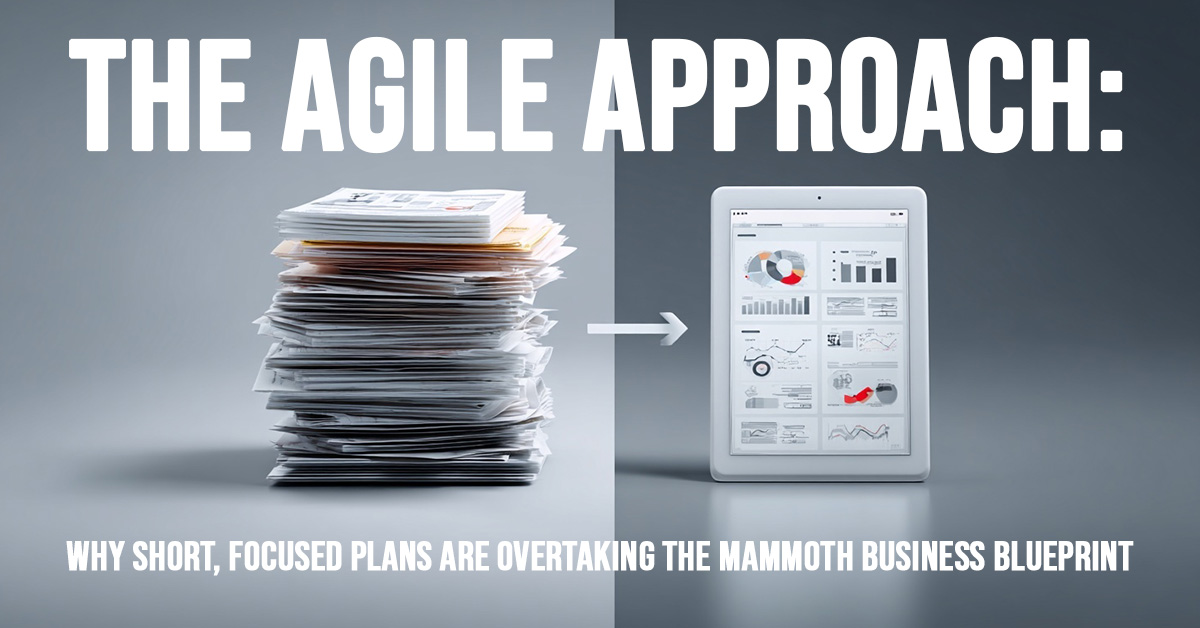
The Agile Approach: Why Short, Focused Plans Are Overtaking the Mammoth Business Blueprint
It wasn’t all that long ago that the creation of exhaustive business plans was a near-sacred ritual in the American business landscape. Companies routinely dedicated significant time and resources to crafting five, or even ten-year plans, documents that often swelled to dozens, if not hundreds, of pages. These tomes were filled with meticulously gathered data, intricate graphs, and detailed strategies outlining the path to projected success. One couldn’t help but wonder if these elaborate blueprints were ever truly digested or, more importantly, effectively implemented once the doors of the business actually opened. In many cases, these grand plans, often a prerequisite for securing startup financing and demanded by banks as part of loan applications, gathered dust on shelves, never fully translating into real-world action. The inherent value of these weighty documents was often unquestioned; we simply continued the practice, churning them out like overblown academic essays.
The Cracks in the Foundation: Why Traditional Business Plans Lose Their Grip
The decline in the effectiveness of traditional, lengthy business plans coincided with an accelerating pace of change in the business environment. Markets, marketing strategies, and technology began evolving at a speed that far outstripped the ability of these static plans to adapt. A business plan meticulously detailing a reliance on billboards and print advertising a decade ago would find itself woefully inadequate in today’s digital-first world, where elements like digital marketing and social media are paramount.
The landscape shifted dramatically with the rise of smartphones, the internet of things, search engine optimization (SEO), influencer marketing, and the power of viral videos – concepts that were barely nascent a mere ten years prior. Many forward-thinking individuals began to view the creation of these lengthy business plans as mere “busy work,” a performative exercise intended to demonstrate competence to lenders rather than a genuine reflection of a solid foundation for a thriving business. Yet, despite this growing skepticism, many financial institutions continued to demand these comprehensive documents, and new ventures dutifully kept generating them.
A Leaner, More Nimble Strategy: Embracing the Agile Plan
A more modern and increasingly favored approach to business planning involves significantly more compact and adaptable strategies. Rather than lengthy dissertations on projected market share, these forward-thinking plans prioritize clear benchmarks and achievable sales goals. They often incorporate easily digestible graphs and well-defined customer personas, offering a simpler and more direct focus on the elements that truly drive success. Crucially, these agile plans are designed to be readily adjusted in response to the inevitable shifts in the marketplace and technological advancements.
The prevailing belief among many contemporary business leaders is that a concise one or two-page document outlining key goals, realistic deadlines, and innovative applications of technology holds far more practical value than a multi-chapter thesis projecting five or ten years into an increasingly unpredictable future. These shorter-term plans and goals allow for greater flexibility and responsiveness, recognizing that a long-term blueprint can quickly become obsolete in today’s dynamic business environment.
In this ever-evolving landscape, protecting your business requires agility and foresight. Business insurance offers a crucial layer of defense, safeguarding your assets and income against unforeseen liabilities and potential financial losses. Contact one of our independent business insurance experts today for a no-obligation quote and ensure your business is equipped to navigate the uncertainties of tomorrow with confidence.
